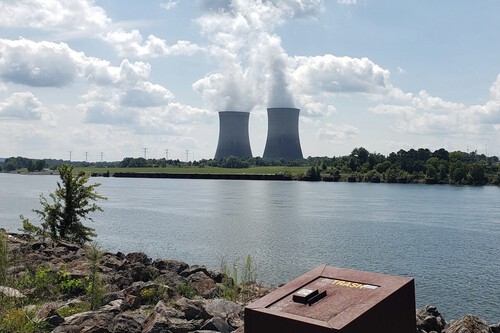The U.S. trade war has made headlines, especially over tariff disputes with China. Now, that conflict has revived an old energy concern: dependence on foreign uranium.
An uncomfortable dependence. The current administration has made it clear it doesn’t want to slow the energy transition. While President Donald Trump has focused on fossil fuels, he’s continued the nuclear energy path set by former President Joe Biden. In this case, both administrations have maintained a rare point of continuity: the goal to triple the country’s nuclear energy output.
To do that, the U.S. still imports 99% of the uranium concentrate used to produce fuel for its nuclear reactors. The country’s 54 nuclear plants generate about one-fifth of its electricity, according to CipherNews.
Who are the suppliers? Most of the uranium comes from Canada, Kazakhstan, Australia, Russia, and Uzbekistan. While uranium has been exempt from current tariffs, that could change depending on future developments. The issue has shaken the energy sector and revealed a structural weakness in the nuclear supply chain.
A bet on domestic mining. According to the Energy Information Administration, domestic uranium concentrate production rose 13-fold last year but remains far from meeting national demand. Still, Scott Melbye, president of the Uranium Producers of America, says at least six companies have restarted mining operations in the U.S.
That hasn’t always been the case. In 1980, the U.S. was the world’s largest uranium producer. Over the following decades, however, other countries—including Canada and Kazakhstan—overtook it due to lower mining costs. The situation worsened after a nuclear disarmament agreement with the USSR: For 20 years, half of U.S. nuclear fuel came from recycled Soviet uranium.
As the U.S. relied increasingly on foreign sources, the 2011 Fukushima accident triggered a new setback. Many countries, including the U.S., reduced investments in nuclear power. Western mining companies paused operations, while state-supported Kazakhstan ramped up production with little concern for profit. Russia also kept selling cheap uranium even after the disarmament treaty expired in 2013.
Will it be self-sufficient? Trump’s policy approach aimed to rebuild the domestic nuclear supply chain. Although uranium remains tariff-free for now, global tensions, technological change and energy demands are pushing the U.S. to take a closer look at its untapped resources. The big question is whether this nuclear revival can be both sufficient—and sustainable—in the long run.
Image | Lee Lawson (Unsplash)
Related | SMRs Were Touted as the Future of Nuclear Power. The U.S. Pilot Project Just Failed



